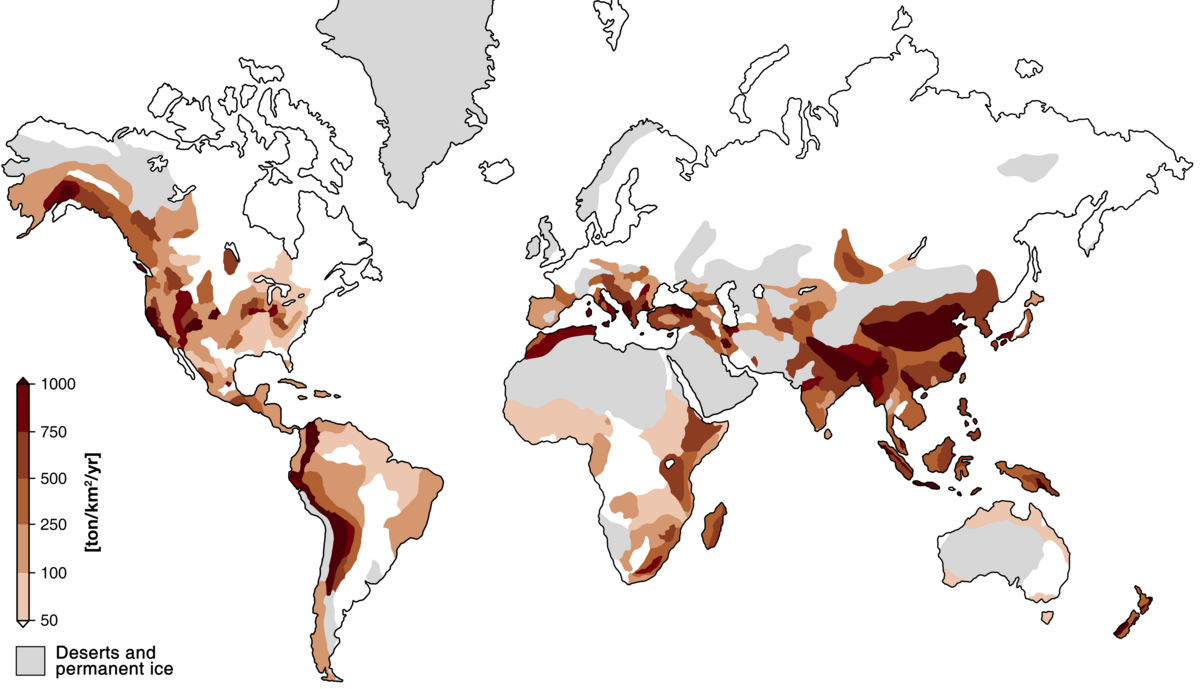Terrestrial sediments transported by rivers are essential for coastal ecosystems and human livelihoods. However, traditional methods, both in-situ measurements and satellite imagery remote sensing, are limited in their ability to provide spatially comprehensive and temporally continuous assessments of sediment dynamics. The GRACE and GRACE Follow-On satellite missions have the potential to observe sedimentation by large rivers. Advanced data processing techniques for careful gravity corrections and extending satellite gravity missions have facilitated the detection of sediment signals in GRACE/-FO data.
Earthu H. Oh, Seoul National University, South Korea
Sediment transport by large rivers
Rivers are integral components of the hydrological cycle, acting as pathways for transporting weathered materials (so-called “sediment”) from mountainous highlands to the oceans. Various factors adjust the amount of river sediment; particularly, there is a general correlation between sediment discharge and riverine magnitude, as heavy precipitation leads to strong chemical weathering. Thus, significant sediment discharge tends to be concentrated in large river systems located in low-latitude regions. Sediments sourced from the highlands into the ocean have been reported to be in the tens of gigatons. They have influenced coastal morphology, water quality, and nutrient supply, thereby affecting marine ecosystems and various aspects of human life.

Despite their importance, accurately estimating sediment discharge and sedimentation has been challenging due to the discontinuous and imperfect nature of measurements. Fieldwork is frequently limited by spatiotemporal and economic constraints, and remote sensing through satellite imagery primarily focuses on suspended sediment loads, leaving total sediment discharge largely unknown.
Detecting river sediments with GRACE satellites
The GRACE and GRACE Follow-On missions have provided direct information on near-surface mass changes. At the coastal regions, the total mass change captured by GRACE/-FO indicates a combination of smoothed signals from various sources, expected as terrestrial and oceanic mass variations, solid Earth deformations (e.g., earthquakes), and river sediment deposition.

Sedimentation signature by the Amazon River
The Amazon basin is the world’s most extensive drainage system, covering approximately 5,900,000 km² and spanning latitudes 5°N to 20°S and longitudes 80°W to 50°W. Field-based studies have estimated that around 1 gigaton of sediments is transported to the Amazon coast and deposited offshore annually. The sedimentation rate can be computed based on the mass balance described above, where earthquake-related solid Earth signals can be negligible because the Amazon coast is located on a tectonically stable crust.
The residuals, obtained by subtracting land and ocean signals from the total surface mass, still contain substantial noises alongside sediment signals due to the combined effects of GRACE/-FO orbit configuration and imperfect correction model (AOD1B). Further temporal-spatial filtering, such as Empirical Orthogonal Function (EOF) analysis, is required to mitigate these problems. Through careful and sequential corrections, the relatively small sediment contribution within the total mass signals can be revealed, estimated as 1,301 million tons per year from June 2002 to May 2023, accounting for 12.6% of the regional GRACE/-FO mass trend near the Amazon River mouth.
Gravity signals associated with sediment discharge are relatively weaker than those from other land or ocean mass changes and are close to the detectability limit, facing constraints for the related studies. However, extending GRACE-FO satellite gravity missions and future missions, such as the Mass-Change and Geosciences International Constellation (MAGIC), may enable more detailed remote sensing of sedimentation processes. These advancements could enhance our understanding of sediment transport and landscape evolution, but also provide more precise insights into GRACE data analysis.
Further Reading
Mouyen, M., Longuevergne, L., Steer, P., Crave, A., Lemoine, J.-M., Save, H., Robin, C. Assessing modern river sediment discharge to the ocean using satellite gravimetry. Nature Communications 9, 3384 (2018). DOI: 10.1038/s41467-018-05921-y
Chang, L., Tang, H., Yi, S., Sun, W. The trend and seasonal change of sediment in the East China Sea detected by GRACE. Geophysical Research Letters 46, 1250–1258 (2019). DOI: 10.1029/2018GL081652
Oh, E. H., Seo, K. W., Jeon, T., Eom, J., Chen, J., Wilson, C. R. Sediment accumulation at the Amazon coast observed by satellite gravimetry. Remote Sensing of Environment 321, 114688 (2025). DOI: 10.1016/j.rse.2025.114688.

